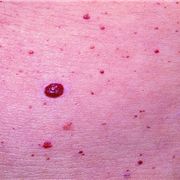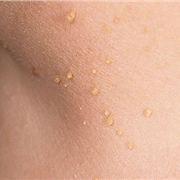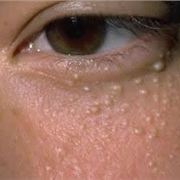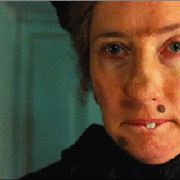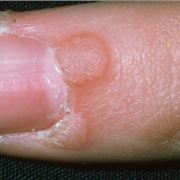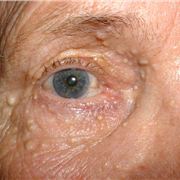HOWEVER young, beautiful and hip we are, we will, as our skin ages, become prone to the occasional skin ‘nasty’ or even an unpleasant collection of skin ‘nasties’.
If you thought electrolysis was only for permanent hair removal then think again.
There are over 20 minor skin conditions and blemishes that can afflict even the most beautiful. Who wants anyone to see the ugly thread veins lurking around the nostrils or cheeks desperately trying to be unsuccessfully hidden under lots of very expensive makeup? Can we prevent them? Can we hide them? What causes them and how can we get rid of them?
Plane or Flat Warts are a highly contagious condition derived from the Human Papilloma Virus (HPV). They are small, often dry and crusty benign epidermal tumours and all can be successfully treated with electrolysis. They can develop individually or in groups, which can grow to hundreds in number. Occasionally they can spontaneously disappear although this can take years, if ever. For either gender, particularly when on the face, they are considered horribly unattractive and can detrimentally affect our confidence and well being. They can often appear on the backs of hands, décolletage and under the arms. Hygiene must be of the highest importance to avoid cross infection and if not treated they can spread.
Seborrhoeic Keratosis are called ‘Senile Warts’. These brown marks are caused by natural aging, sun damage and have a genetic link. They are classified within the wart family but differ in the fact they’re not contagious. They can start life as just a tiny dry piece of skin on the surface of the skin which grows larger, crustier and uglier growing as big as up to two inches across. They become raised and if you find one you are likely to get more. Sometimes they can almost cover the whole trunk of the body. I once had a client who said she felt like a tree trunk and hated her husband spooning her as when he put his hand round her she would just freeze. They can also be quite common on the face in older people. They are usually brown because of melanin and so can be mistaken for moles to the untrained eye.
Thread Veins are cosmetically disfiguring and can really affect our confidence.
Thread veins are also often associated – usually incorrectly – with the stigma of alcoholism. Although alcohol can be a contributory factor, as facial flushing can cause damage to the capillaries, (spicy food may also cause similar effects) it is not the cause.
There are many reasons we get the tiny red capillaries seen on the surface of the skin that we call thread veins. Most of us are susceptible with causes ranging from sun damage, ageing, hormones, hereditary and genetic causes, pregnancy, smoking, extreme sports and harsh weather exposure to name a few. They are very common on a maturing fragile ‘English rose’ complexion. Rosacea (as well as the medication for it) may be a related factor, and the two conditions often appear simultaneously.
Blood Spots or Cherry spots are bright red dots on the surface of the skin. They can be tiny and flat to the skin or the size of a 50 pence piece and domed shaped and raised from the surface of the skin. Whatever the size, they all start to appear as we age. They usually appear on the trunk but are also seen on the face and other areas of the body and limbs. Sun damage is the main culprit but they are also genetic and tend to run in families. Sun beds are a definite no-no and sun screen is a help but unfortunately there is nowhere to hide if you are prone to them.
Spider Naevi is a central dilated blood vessel, with smaller capillaries radiating from its’ body resembling the legs of a spider. Found as individual blemishes or as groups they will often appear as a result of a knock or minor accident to the area. Hormones are another contributory factor and pregnancy can be a time when many appear spontaneously. Sun damage, smoking and many other factors such as genetic links can be a contributory factor. Usually they do not appear until adult life although children can suffer from them a result of an injury.
Skin Tags annoying, irritating, ugly little critters which are a loose fibrous tissue skin complaint which affects so many of us. Not the sexiest of things they grow in areas of friction - underarm, under the breasts or around the neck where necklaces may irritate and even under any unwanted ‘rolls’. Once the first one appears, be warned, others will follow and some sufferers have over 100 varying in size from a grain of rice to a kidney bean (or larger).
Many so called ‘experts’ advise to tie a piece of cotton or tooth floss around them to cut off the blood supply and that this will kill them. That is probably true but its impractical with many tags, unhygienic, time consuming and quite painful as you are strangulating it slowly. Infections are prone with this removal method, not to mention the fact it should be checked out by a medical practitioner to confirm that it is actually a skin tag and not a more suspicious blemish.
Skin tags that cause irritation or are cosmetically unappealing may be removed safely, easily and effectively using electrolysis. Electrolysis, in the hands of a highly skilled operator, is a brilliant method of removal because it is so quick, effective, sterile and safe. The procedure is only a little uncomfortable with some clients experiencing no discomfort whatsoever.
Milia are small, white, often hard lumps appearing on the surface of the skin. A pore becomes blocked and the sebum within keratinises. Keratin is a protein inherent in our bodies – it is a main component of hair and nails and even animal hooves – which illustrates just how hard it can become. They can be very difficult to remove. Exfoliation can help remove the surface ones which are ready to pop out without too much invasive treatment and beauty therapists will often use an implement called a microlance to remove them.
With the odd milia on a young skin this can be the preferred method of choice but it can result in pigmentation changes and scarring and is definitely not recommended in areas such as the very sensitive eye area where milia often appear. Electrolysis, where a fine probe (the size of an eyelash) is used as a vehicle to introduce energy into the milia is by far the most gentle and effective method. This breaks up the milia, which then gradually become absorbed into the skin with no cutting or removal required. No definitive cause of milia is known although they are often related to diet with a high cholesterol count, excessive vitamin C, too rich moisturising cream and are also associated with dry skin which can be acidic.
Moles are simply pigmented growths that usually appear slightly velvety, but, unlike freckles they have a difference in appearance and texture to the surrounding skin. ‘Nanny McPhee’ moles are the typical growth that can be cosmetically disfiguring and can seriously damage an individual’s self esteem and confidence. Using electrolysis, for cosmetic purposes only, the mole can be easily treated, (but not removed). This is often so effective and the appearance of it so visibly reduced that it is hard to tell where it once was. Most moles are benign and quite safe to treat with electrolysis but expert identification is required prior to treatment. Hairs from moles are easily treated by those trained in electrolysis and once treatment is started it is normal for the mole itself to reduce in size and colour. Hairs in moles are generally deep strong hairs which require repeat treatment.
Common warts are the same as the warts on the sole of the foot called Verrucas or Plantar Warts and electrolysis has a great deal of success treating both. Highly contagious and part of the HPV virus, they’re like their name, ‘common’. Sufferers can be blighted with one or many and when they are dispersed on several fingers they are physically and emotionally challenging. Even a Liz Taylor sized diamond on a finger won’t detract from the appearance of a wart and sufferers can find themselves apprehensive to even shake hands with people. Various treatments are available over the counter but they have varying degrees of success and can just sensitise the area. Cryogenically freezing off the offending wart often leaves blanched skin remaining and is not always successful. Electrolysis is definitely worth a try as it can be so successful even on the most stubborn warts.
Syringoma are flesh colour creamy bumps and lumps which appear around the eye area and are often mistaken for milia but do not contain a hard keratinised nodule as milia do. They are benign non-contagious tumours of the eccrine gland and are small, generally oval shaped, often numerous in number which can make them ageing and unattractive. Exfoliation is unsuccessful and electrolysis is one of the best treatments available for this condition.
Solution: Electrolysis
If you thought electrolysis was only for permanent hair removal then think again. It is now being adopted for many minor skin complaints and conditions which are treatable using this method. The beauty of it is that not only is it safe and effective but it is quick, performing its magic with no downtime, no scalpels, no cutting, no stitching, no scarring and it is affordable. Known as Advanced Cosmetic Procedures using electrolysis, only highly specialised and qualified electrolysists can perform such treatments.
Electrolysis utilises a tiny fine probe (about the size of an eyelash) through which a tiny burst of radio frequency alternating current is targeted. These developments, alongside today’s modern technology, have meant electrolysis has become a gentler and more comfortable, even more effective and is an affordable, modern treatment increasingly popular today.
With the continuing cuts in the NHS, treatment for these nasties, considered cosmetic and not health or life threatening problems, is no longer available through the local GP and the consumer is looking for an alternative and perhaps more effective methods to treat their skin nasties. And with the growing popularity of programmes such as Embarrassing Illnesses it is evident there are a lot of nasties out there...
She is on the board of the British Association & Institute of Electrolysis (BIAE), a member of the City & Guilds National Advisory Committee (NAC), a member of the Royal Society of Medicine (RSM) and a member of the British Association of Therapists and Cosmetologists (BABTAC).
To find out more visit www.elainestoddart.com












